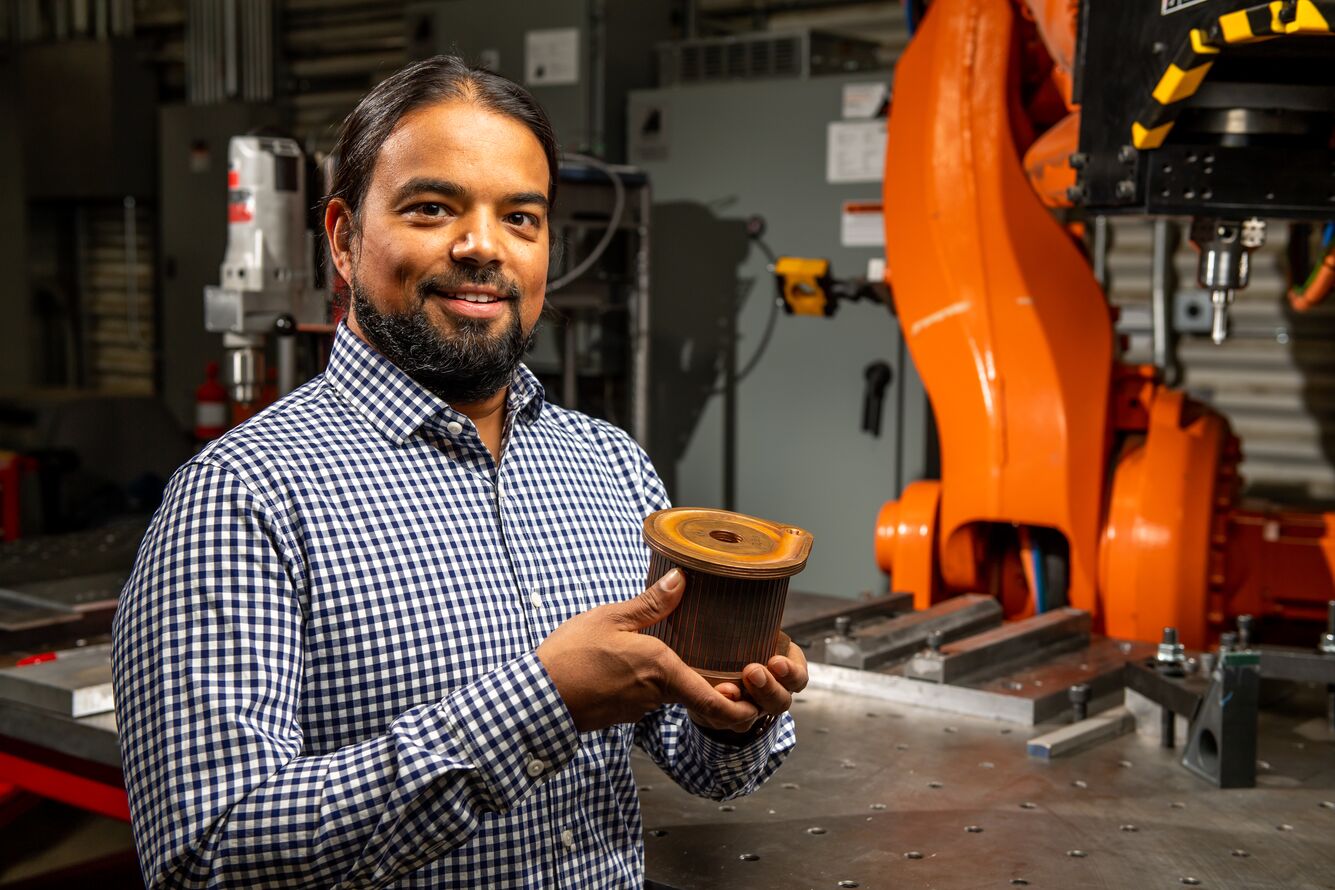Technology Overview
In friction-stir welding and friction-stir processing (FSW/FSP) and related processes, properties are governed by process temperature. Changing thermal boundary conditions cause variation in weld temperature which can result in weld defects and/or sub-optimal properties. Robust temperature control enables unprecedented control of spindle power input and process temperature.
Pacific Northwest National Laboratory’s robust temperature control uses torque modulation to control energy input with unmatched precision and robustness. Spindle power input or tool temperature can be controlled to a user-defined setpoint or profile. Robust temperature control can drive higher feed rates, improved properties, reduced variation, reduced development time, and increased process robustness.
For many applications, robust temperature control can hold weld temperatures within +/-1°C of a setpoint. For processes with high traverse rates and extreme thermal disturbances, temperature variations may be higher. The figure below shows an example of a component with extreme thermal disturbances that could not be welded without robust temperature control.
Technology Features
- Spindle torque modulation enables unmatched thermal control accuracy and disturbance rejection.
- Provides ability to command a power and temperature setpoint or power and temperature profile.
- Temperature or power setpoints can be adjusted during welding and processing.
- Gain scheduling for enhanced process robustness.
- The software logic is provided in structured text as part of an integration guide for robust temperature control. Additional technical data and user guides are provided to assist with machine tool integration.
Examples
- Dissimilar materials joining: enables 129% and 109% improvement for displacement and load to failure for armor-grade aluminum to armor-grade steel joints.
- Grain size control: 43.75% reduction in grain size by temperature controlled FSP.
- Improved properties: 95.9% improvement in cavitation erosion resistance by temperature-controlled FSP.
- Disturbance rejection: Enabled weldability of complex weld geometry, thermal boundary, and high-speed conditions of next-generation copper rotors for electric vehicles.
Advantages
- Expand the application of FSW, FSP, and related processes to complex geometries and temperature-sensitive materials.
- Reduce/eliminate part-to-part variations.
- Reduce/eliminate variations within a part.
- Reduce/eliminate process development time.
- Increase tool life.
- Increase low-temperature stability.
- Enable higher optimization and control of microstructure and associated properties.
State of Development
Currently in use for FSW, FSP, ShAPE, and friction-stir additive manufacturing.

